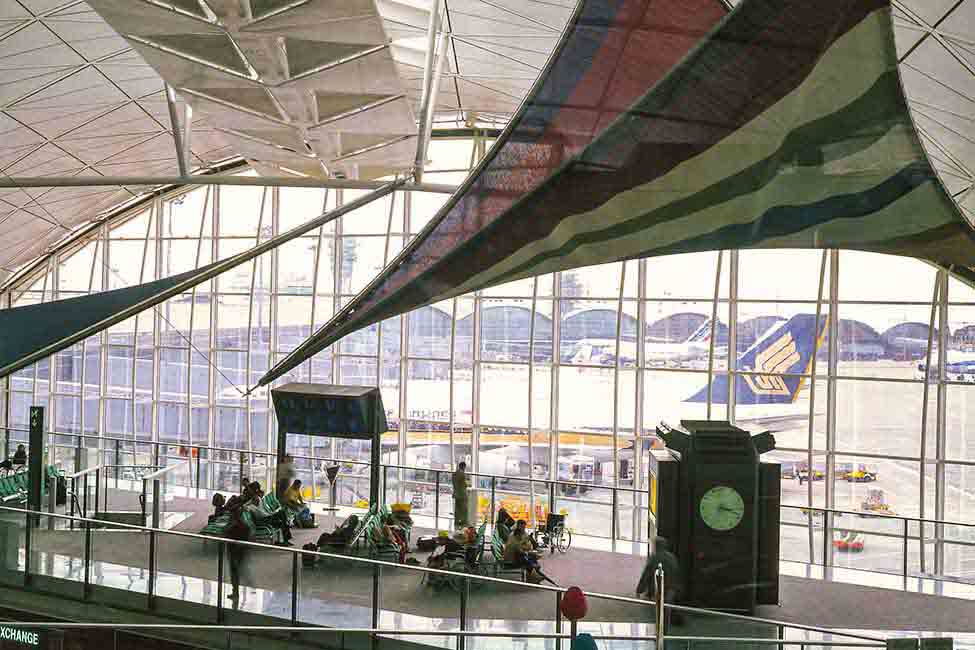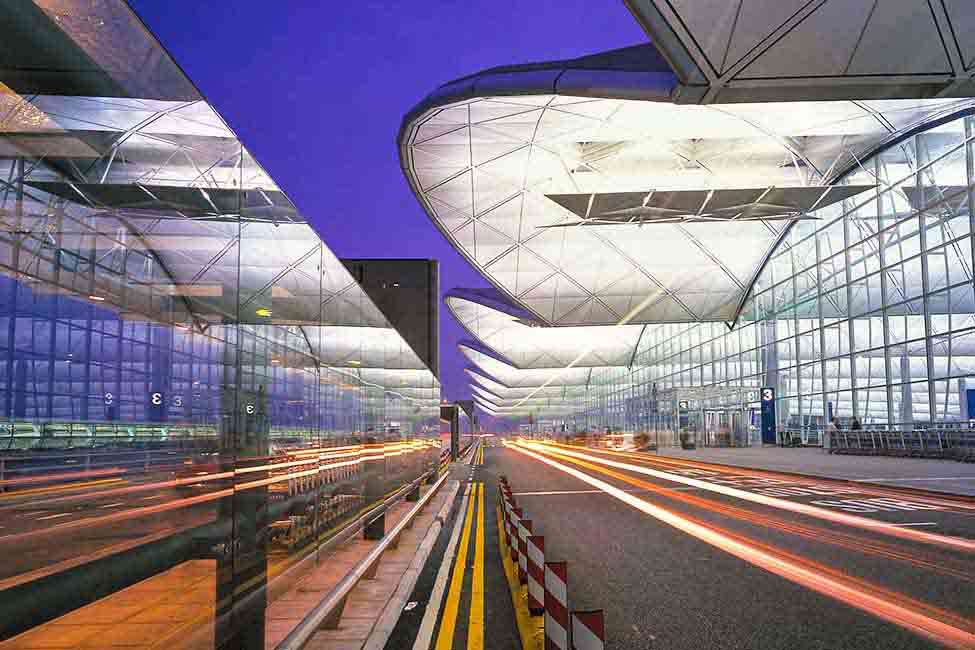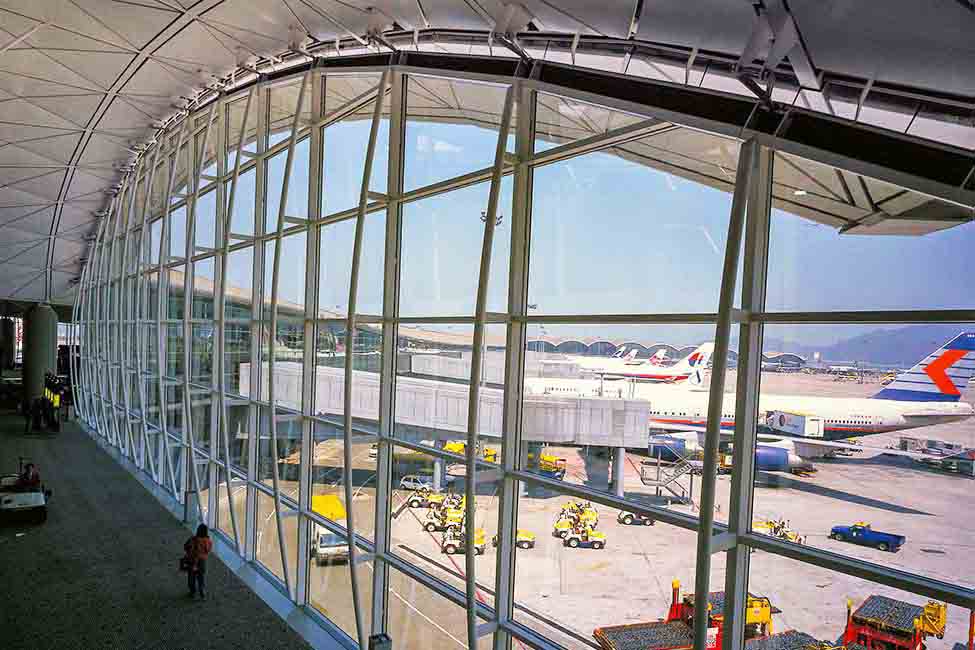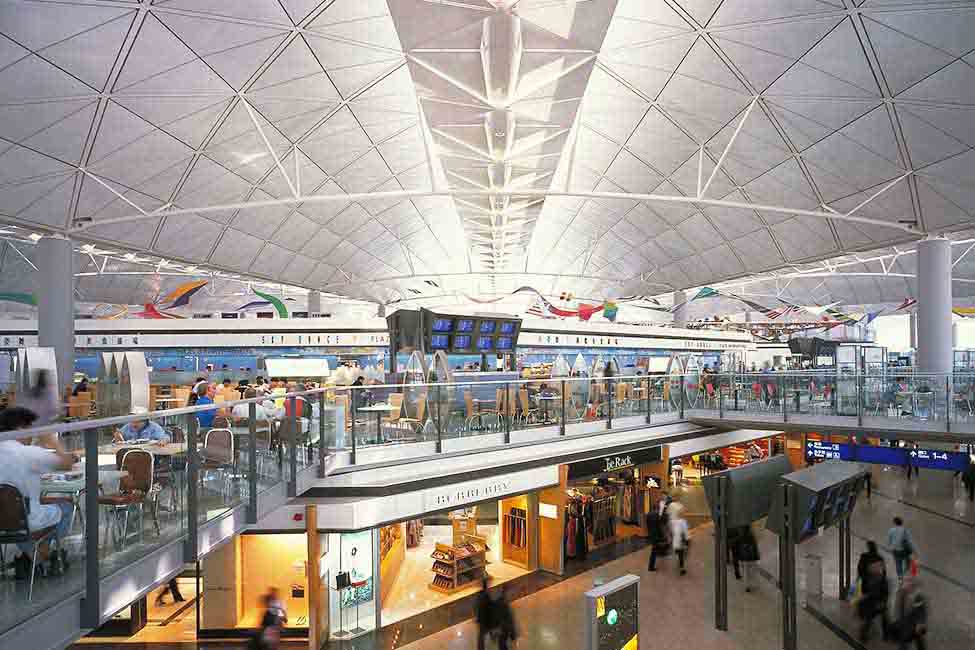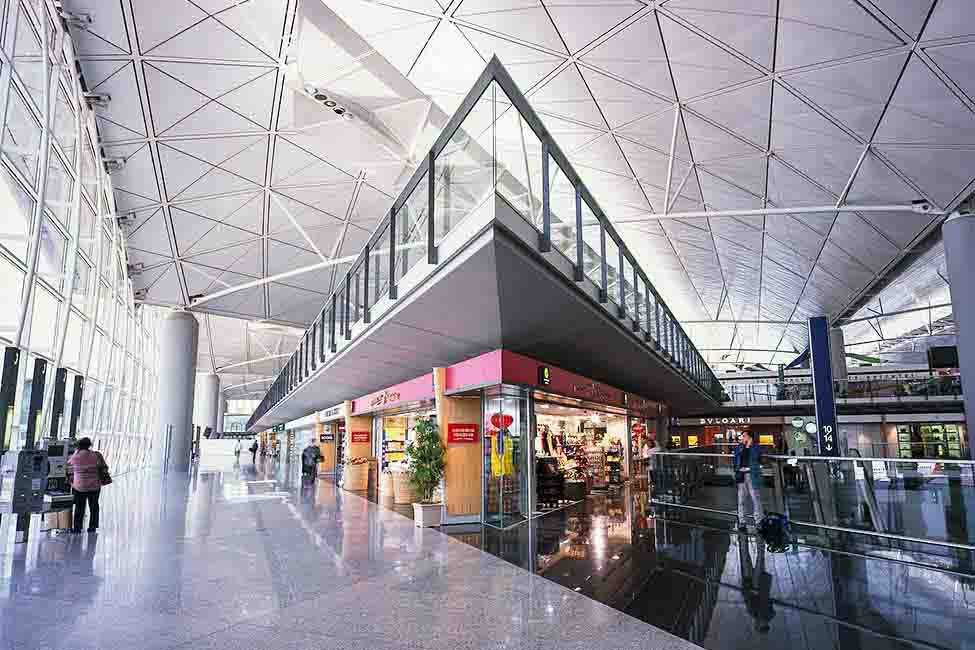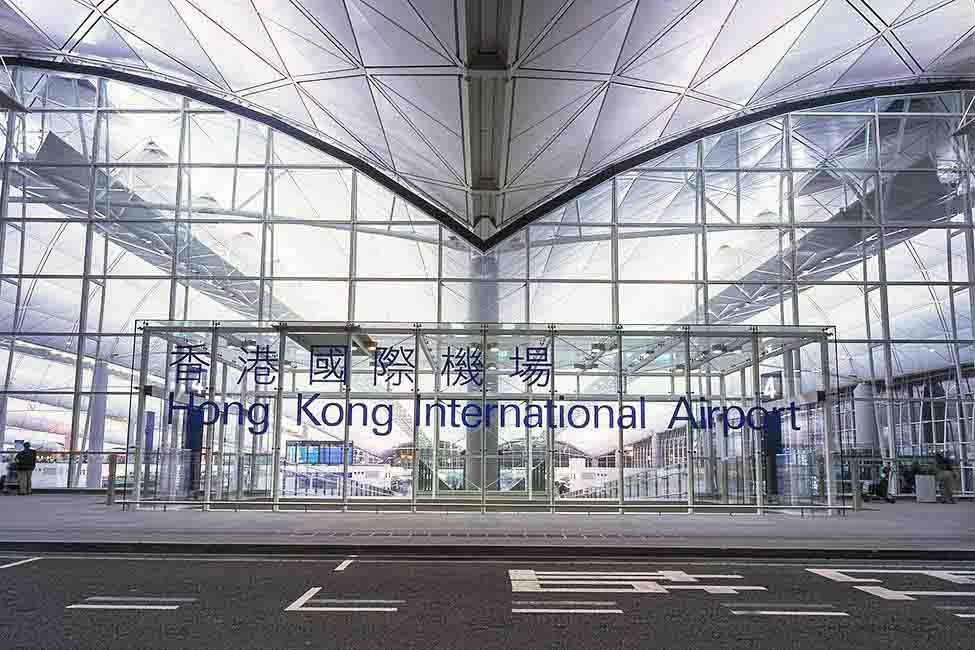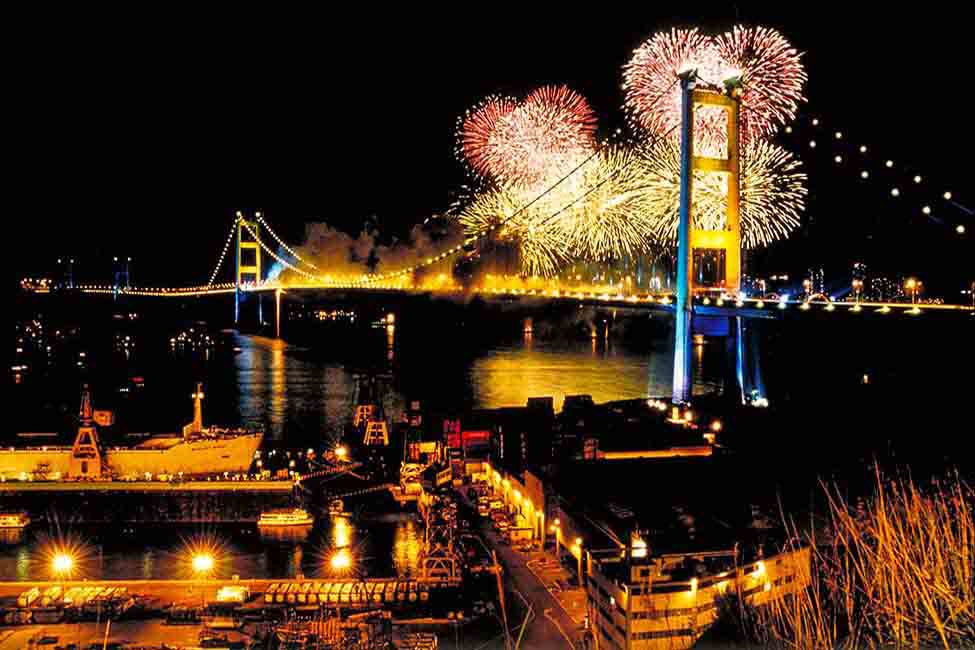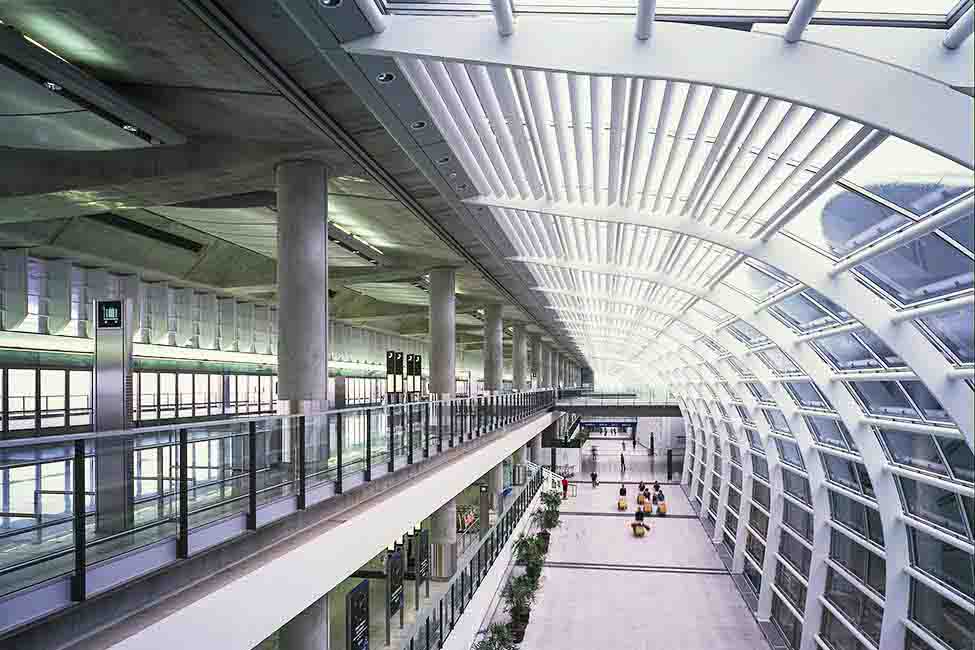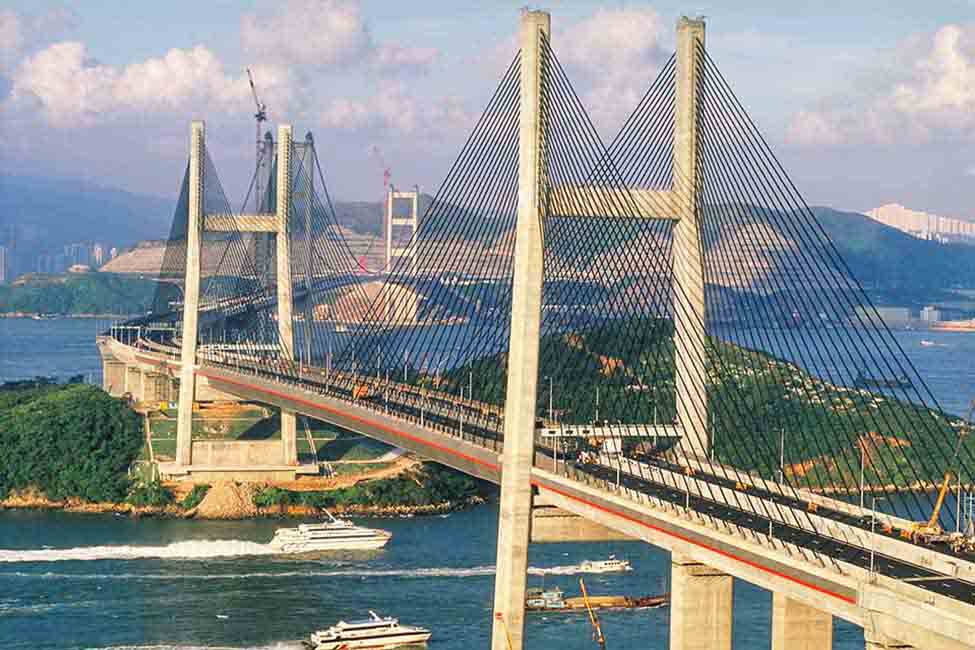Work included
- 4 major sponsors
- 10 separate projects
- 200 major construction contracts
- More than 1,000 contractual interfaces
- A new transportation corridor stretching 21 miles (34 kilometers) from Hong Kong Island to the island site of Hong Kong International Airport including
- a high-speed rail system
- two tunnels
- two bridges
- a six-lane expressway
The project team built the new airport on an island site reclaimed from the sea, initially capable of handling 35 million passengers a year in its first phase. Operations were moved from the existing Kai Tak Airport to Hong Kong International during a single night in July 1998, a task that required the coordinated operation of some 1,200 vehicles and a convoy of barges. Despite the enormous complexity, flight and passenger processing met operational standards before the end of the first week, and cargo operations were on track soon after.
An amazing undertaking
"Imagine constructing—all at the same time—Charles de Gaulle Airport, Phase 2 of Singapore's Mass Rail Transit, the Golden Gate Bridge, the Kennedy Expressway in Chicago, two Boston Harbor tunnels, housing for the 20,000 residents of Bend, Oregon, and enough reclaimed land for 16 Disneyland's," said Bechtel executive James van Hoften. "Imagine further," he said, "that you're doing it all in one of the world's most densely populated cities and in a political climate of incredible complexity." That was this project.
Hong Kong International Airport suspension bridge
The program included the creation of nearly 50 acres (some 20 hectares) of new land at Hong Kong Island's central waterfront, the downtown terminus of the airport railway. The reclamation project also provided land for development, a precious commodity in the congested metropolis.
Transferring skills
One aspect of Bechtel's charter with Hong Kong's airport agency was the transfer of techniques and working methods—not only to government staff within the agency but more broadly to personnel in the larger government and engineering-construction community. A prime example: the project management and project controls methods pioneered for the Airport Core Program were used as the basis for developing an overall public works management program for Hong Kong.


